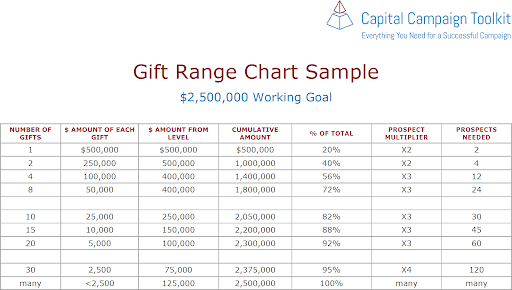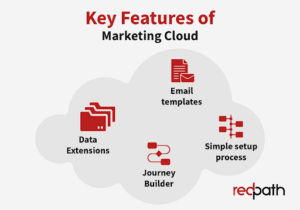Effective outreach helps your nonprofit raise awareness and funds for its cause. But if you want donors to respond to your messages, you’ll need to make your outreach relevant to each recipient.
That’s where constituent relationship management (CRM) solutions come in! CRMs store donor data, which can reveal shared characteristics among your supporters. By separating donors into categories based on these similarities, you can personalize communications.
In this guide, we’ve created a list of segmentation strategies your nonprofit can use. Explore these strategies to send the right messages to the right people.
-
Segment donors by communication preferences.
Your donors aren’t all the same, and they don’t all want to give using the same channels. For example, some might respond to phone pledges while others prefer online donations. Use data to see how each segment prefers to communicate and then use a multichannel approach to engage them.
CharityEngine’s guide to nonprofit donations recommends using the following tools:
- Email: If your audience is a little older, email is a reliable way to engage them. It’s fast, it’s easy, and it can stay in an inbox and remind donors to act.
- Optimized donation forms: No matter which channel you use, everyone will end up on your donation form. It should make giving easy, offering many payment options and the ability to begin a monthly gift.
- Mobile campaigns: Younger audiences respond favorably to SMS or text-to-give campaigns. If that’s the makeup of your audience, mobile is the way to go.
Appeal to as many communication preferences as possible by planning message templates. This way, you can adjust your messages for any channel. You’ll reach every donor, whether they prefer a text message or direct mail.
2. Group donors by involvement history.
Imagine you accept a job offer and arrive at the office for your first day of work. You’re probably expecting to go through training or new employee orientation. Wouldn’t you be surprised if you weren’t trained at all and were expected to just start working?
In the same way, your nonprofit’s communication should match a donor’s level of experience with your organization. For example, engage brand-new donors with feel-good stories about your mission. Or, identify your monthly givers and consider a campaign to get them to pledge $5 a month. Knowing how people are giving helps you understand what the next ask should be.
Properly managed donor data reveals donors’ histories of involvement. Your CRM can analyze giving history for you to make these patterns easier to find. Consider the following elements of their involvement:
- Recency: Throughout a donor’s engagement with your nonprofit, the messages that will be most compelling change. For example, if someone donates regularly, show them how their donation is used. If you have a lapsed donor, your strategies will change.
- Nature: How did donors come on board? Were they a plus-one at an event, or did they make a gift in a loved one’s memory? Understanding how they’re involved can help you send the right message.
- Method: Knowing how donors give can help you tailor messages for your audience. For example, send a quick text to donors who usually give through a text-to-give campaign.
Plus, this information can be used as social proof when stewarding prospective donors. It’s human nature to want to join a crowd! Entice others to commit to your organization by publicizing giving trends or offering donor profiles.
3. Use gift size to segment donors.
While every donation is important, gift sizes can indicate a level of commitment. For example, someone who occasionally makes sizable gifts may be a candidate for a major gift. Or, someone who gives small gifts could make a reliable monthly donor.
Tracking gift size with your CRM reveals donors’ responses to your fundraising efforts. This way, you’ll know what future fundraising asks are appropriate. To do this, segment donors according to the following gift sizes:
- Annual gifts: It can be easy to dismiss year-end donors until that season rolls around. Build better relationships with them by sending communications as early as September! Issue a challenge and track progress to generate excitement.
- Mid-level gifts: Mid-level donors are already committed to your cause. But they might be one impact story or case study away from making a more sizable gift. Share the impact of their donations and what more your nonprofit needs.
- Major gifts: Selecting nonprofit fundraising software involves looking for the right features. You’ll want a CRM that manages major and planned gifts. This way, you can identify major donors and thank them for their generosity. Gratitude helps you cultivate stronger relationships with these donors.
According to Double the Donation, you can also upgrade donors to higher giving levels. Use your CRM to learn how donors’ relationships evolve with your nonprofit. Then, create a plan to guide other donors through this journey.
Use these segmentation strategies to target donors for more relevant fundraising appeals. Also, they’ll help you properly steward donors! Your CRM can show you how to thank donors personally and specifically. This way, you can send the right messages, gifts, invites, and more to deepen each donor’s commitment.
Philip Schmitz – CEO & Founder
 Philip Schmitz is the CEO and founder of cloud-services leader BIS Global, creators of the CharityEngine fundraising & communications technology platform. Founded in 1999, Phil has managed the vision and strategy for BIS’s suite of integrated business applications & hosting tools used by more than 400 businesses & non-profits.
Philip Schmitz is the CEO and founder of cloud-services leader BIS Global, creators of the CharityEngine fundraising & communications technology platform. Founded in 1999, Phil has managed the vision and strategy for BIS’s suite of integrated business applications & hosting tools used by more than 400 businesses & non-profits.





